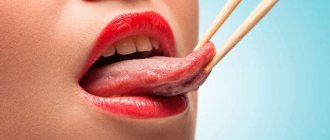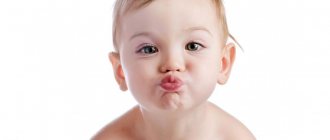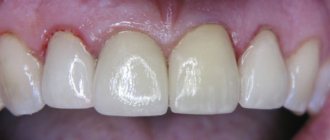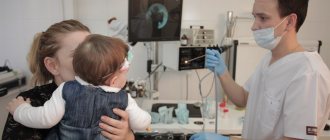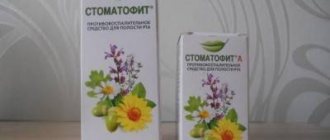April 5, 2020
Diathesis is not just an allergy, but a predisposition of the body to the occurrence of diseases and pathological reactions that manifest themselves mainly in childhood. This is a special condition accompanied by the child’s tendency to:
- to allergic reactions;
- frequent colds and respiratory infections;
- metabolic disorders;
- changes in immunological reactivity.
With diathesis, an inadequate response of the body to normal environmental influences (irritants) is observed. But such reactions occur with an unfavorable combination of several provoking factors: errors in nutrition, poor diet, improper care, frequent infections, etc.
The most common type of diathesis is exudative-catarrhal. It is this that manifests itself in the form of allergic dermatitis. The first signs appear as early as 3-6 months and can remain until 1-2 years, when in most children all symptoms of diathesis disappear.
The main signs that manifest exudative-catarrhal diathesis are:
- “gneiss” – peeling and seborrheic crusts on the scalp;
- redness, peeling and thickening of the skin of the cheeks (“milk scab”);
- itchy nodules (“strophulus”);
- diaper rash of large folds.
One of the methods of treating diathesis is local therapy.
The complex treatment of diathesis includes local therapy in the form of ointments and gels. They should only be prescribed by a specialist, and he takes this issue very seriously, since the main role in the appearance of signs of diathesis is given to allergens that affect the child’s skin.
What drugs are often included in the list prescribed by a doctor:
- To soften and quickly heal the skin: Bepanten, zinc ointment, Desitin (zinc-based ointment).
- For disinfection, softening and prevention of the formation of new crusts: Diaderm, Glutamol.
- To suppress an allergic reaction: Fenistil, Vibrocil, Cetrin.
It is worth considering that ointments are not the main way to treat diathesis, since they do not affect the cause in any way. Local therapy is used as an auxiliary method. The basis of treatment should be diet, proper care, and avoidance of contact with allergens.
How long do food allergies last in infants?
Children with food allergies have an increased risk of other allergic reactions or illnesses in the future. There is also a chance that intolerance to the product will remain with the baby for life. However, up to 50% of allergic reactions in babies go away by the age of one year. And up to 90% by 5 years. Most of the patients I have worked with at 3 years old go to kindergarten without any manifestations of the disease.
It is possible to protect your child from food allergies by paying close attention to his diet and the mother’s diet during breastfeeding. And if allergies cannot be avoided, contact a specialist and be healthy.
Hormonal ointments for diathesis
A special group of local drugs used for diathesis are hormonal ointments. They are used if non-hormonal drugs do not help. Hormonal drugs have a more serious composition, including hormonal components - glucocorticoids. These are steroid hormones synthesized by the adrenal cortex. The most common among them are:
- Natural glucocorticoids: cortisol, hydrocortisone. Their effect lasts for 8-12 hours.
- Synthetic analogues: prednisolone, prednisone, methylprednisolone, mometasone, clobetasol. The substances act within 12-36 hours.
- Synthetic analogues containing fluoride: dexamethasone, betamethasone, paramethasone, fluprednisolone. The effect of the substances lasts up to 3 days.
Such substances have the following effects:
- Antiallergic. Hormones reduce the level of basophils - substances activated during allergies.
- Anti-inflammatory. Substances reduce the level of inflammatory mediators in the blood.
Hormonal drugs have a faster effect, but also have a more impressive list of side effects. For this reason, few hormonal ointments are approved for children, and they try to resort to them in extreme cases, when the child’s condition is advanced and he suffers from itching, large lesions and other unpleasant symptoms.
The list of hormonal drugs used for diathesis includes:
- Advantan (methylprednisolone) – from 4 months;
- Lokoid (hydrocortisone) – from 6 months;
- Afloderm (alclomethasone) – from 6 months;
- Beloderm (betamethasone) – from 6 months
- Dermovate (clobetasol) – from 1 year;
- Elokol (mometasone furoate) – from 2 years.
What are the dangers of using hormonal ointments for diathesis?
Because children have a larger surface area to weight ratio than adults, they are at greater risk for side effects from hormonal medications. With long-term use there is a risk of growth and development disorders. For this reason, children are prescribed minimal doses of ointments, as well as short courses. For example, Advantan cannot be used for longer than 4 weeks.
There are other features of the use of hormonal ointments associated with the small surface area of the child’s body. For example, Beloderm ointment is used very carefully and should never be applied under a diaper, since due to the increased absorption of the active components, the risk of developing serious side effects increases.
It is equally important to apply hormonal ointment with caution in the area of body folds. In these places, the ointment is absorbed more actively and can have a systemic effect on the body, that is, enter the bloodstream and influence from the inside.
In the case of hormonal ointments, it is also important:
- do not exceed the prescribed dosage;
- use the amount of ointment prescribed by the specialist;
- do not extend the period of use (in most cases no longer than 5 days);
- Apply only to the affected areas.
Causes of rashes around the mouth in children
A rash around the mouth in a child of different ages occurs for several reasons:
- excessive salivation;
- violation of hygiene;
- infectious diseases;
- dermatitis;
- helminthic infestation;
- influence of external factors.
A rash around a child’s mouth can be caused by many factors that are important to identify for proper treatment.
Many of these causes are associated with vitamin deficiency and the use of hormonal drugs to treat certain diseases. The impetus for the spread of the rash can be a disruption of the digestive tract. This is both an imperfection of the enzymatic system and functional disorders.
Children of different ages go through several growth spurts. These are the stages of maturation of internal and endocrine organs. Therefore, a rash may appear for some period of time and go away on its own.
What to do if a child has diathesis
Local therapy using ointments is one of the components of complex treatment. But both hormonal and non-hormonal drugs should be prescribed by a doctor individually for each baby, taking into account the characteristics of the diathesis.
Self-medication in such a situation is not only ineffective, but also dangerous for the child’s health. Therefore, it is better to contact competent specialists. PsorMak employs doctors with extensive experience in treating diathesis.
We take a comprehensive approach to diagnosis and treatment, and for local therapy we use ointment made according to our own recipe without the addition of hormones.
She has been helping our patients at our clinic for more than 25 years, so we guarantee a complete cure without side effects. Contact us for a consultation so we can begin solving your problem. April 5, 2020
Author of the article: dermatologist Mak Vladimir Fedorovich
How to recognize a food allergy and not confuse it with other diseases?
Most often, in order to diagnose a food allergy, a doctor only needs an examination and a detailed interview with the mother. Mom can point out that she herself has a food allergy or point the doctor to a specific food. Sometimes it is difficult to make such a diagnosis right away. Then the doctor may order an examination. First, a general blood test. And then, if necessary, specific allergy tests: examination for immunoglobulins, and at a later age, provocative tests. It is these tests that were chosen as the most informative in the latest clinical recommendations. In addition, your baby may need to consult an allergist, dermatologist or gastroenterologist, depending on the symptoms that are bothering him. And also, additional examination from the gastrointestinal tract.
Atopic dermatitis or infantile eczema
Atopic dermatitis is a reaction to hazardous foods. Redness can occur on the body in the chest area, arms and neck. If the allergen is not excluded, the elements open up, begin to get wet, and the skin becomes very itchy.
Five foods that cause atopic dermatitis
Genes responsible for predisposition to the development of the disease have been identified. But it can be realized only with an initially low state of immunity. Often, manifestations of pathology begin under the influence of a stress factor. If there are inflammatory skin diseases, traumatic injuries, then this is the entrance gate for infection and allergens.
The cause of the development of dermatitis can be food, respiratory antigens, or the body’s reaction to long-term use of antibiotics.
Tips for proper treatment of atopic dermatitis:
Treatment with drugs depends on the cause of the rash
A rash around a child’s mouth is treated taking into account the cause that caused it. There is no universal remedy that would help in all cases.
Some measures help prevent the development of the disorder:
- compliance with hygiene rules;
- early contact with a doctor;
- for dry skin, you need to use nourishing creams;
- before going outside during the cold period, you need to apply a protective cream;
- use only children's clothing and body care products;
- reduce the time a child spends outdoors in the open sun in summer.
Therapy for the disorder must be comprehensive. These are local and systemic remedies. At all stages of treatment, it is necessary to monitor whether the patient’s condition improves. Once the type of pathogen is determined, etiological treatment is prescribed. It involves antibacterial or antiviral treatment that is active against this pathogen.
In most cases, physiotherapy methods are included in therapy. They help improve local blood flow and have an anti-inflammatory effect. The possibility of using alternative medicine should be checked with a doctor.
What does the color and type of rash indicate?
All types of rash are different. Therefore, the external manifestations of the elements can tell the doctor a lot. A pinpoint rash often indicates an infectious process and intoxication. If it is filled with fluid, it is caused by the herpes virus.
When the rash is detected only in one place, the cause is most often local in nature . If elements appear on the back, arms, neck, then the matter is in internal processes.
Based on the appearance of the manifestations, one can suspect the cause of the phenomenon:
| Disease | Appearance of the rash |
| Perinatal acne | Small elements with a white rod inside. Contents viscous |
| Atopic dermatitis | The elements merge with each other, the surface of the skin is red and peeling |
| Herpes | Bubbles of different sizes, filled with clear liquid |
| Allergy | Elements rise above the surface of the skin, the skin around is red, there is no content inside |
| Weathering | Characterized by redness of the skin, areas of peeling and itching |
| Worm infestation | The rash is pinpoint, elements without content, appear in the area of the nasolabial triangle, neck |
| Perioral dermatitis | At first, the elements are located separately, then merge with each other, pus appears, wet areas appear, the surface peels off |
When redness and peeling are observed, this is a sign of the allergic nature of the disorder. If the affected area is large, the specialist suspects toxic erythema. The purulent contents of the vesicle indicate infection, a bacterial complication.
Regardless of the type of rash, they occur on initially intact skin. The intensity and location of the process determine the type of elements. Each characterizes a disruption in the functioning of the entire organism.
Environmental factors
Rash and irritation around a child's mouth often occurs if the skin is exposed to:
- wind;
- ultraviolet radiation;
- humid hot climate.
A baby's skin is very delicate, so it needs to be protected from open sunlight. The result of insolation is the appearance of red spots and rashes. If a child has increased salivation and is outdoors, then when there are gusts of wind, the skin may become chapped, reddened, and covered with dermatological elements.
The increase in symptoms occurs gradually: from the first hours, dry skin appears, then it turns red, and blisters with watery contents appear. When the climate changes or vacations in hot countries, the elements appear due to the onset of excessive work of the sebaceous glands.
Herpes
Decreased immunity can be caused by viral and bacterial infections. Often a sign of unstable functioning of the protective system is a herpetic rash. These are small elements with watery contents. The appearance of herpetic elements in an infant is a very unfavorable sign.
As a rule, infection occurs through direct contact with close relatives during an exacerbation period.
Since immunity is just being formed, innate immunity and protective factors contained in breast milk protect for up to 6 months, herpetic eruptions may indicate congenital pathologies with an immunosuppressive effect.
An exacerbation of the infection is typical after the age of 3 years , when the child begins to visit kindergartens, come into contact with various bacteria and viruses, and enters the social sphere.

